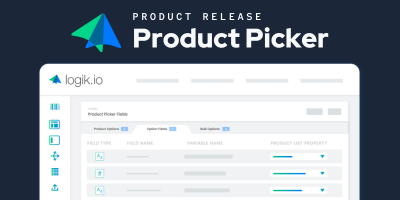Vendors in the B2B eCommerce solutions space are living through one of the most interesting markets of recent decades. Accelerated digital advancement, exceedingly “consumerized” buyers, technical innovation and more have put increasing pressure on businesses to adapt in equal measure.
Traditional sales representatives and direct channels are falling to the wayside in favor of properly architected B2B eCommerce environments for self-directed shoppers to navigate. Across the board, configure, price, quote software tends to serve as the scaffolding supporting such architecture.
CPQ technology makes a lot of great things happen for users – it allows for product customization, manufacturing and sales bill of material generation, pricing updates, to begin.
As one of the leading CPQ vendors around, Salesforce has become closely intertwined with the larger concept of CPQ itself.
So, those with Salesforce B2B eCommerce built into their current tech stacks may think they’re in for smooth sailing, thanks to brand recognition and proven stability. They’re not wrong in any way, but with the addition of Logik.io, they’re liable to see boosts across the board.
Logik.io’s Commerce Logic Engine integrates directly with Salesforce B2B Commerce Cloud to augment the commerce environment by providing an intelligent and dynamic guided selling and product configuration experience on your B2B eCommerce site, so you can sell all of your products, no matter how sophisticated, and give your buyers the best possible buying experience.
Our dynamic, targeted commerce logic engine incorporates dynamic, questionnaire-like experiences into eCommerce environments, gathering buyer requirements in real time. That information is then leveraged alongside pre-set product rules, requirements, recommendations and the like, to return an optimized solution that can be imported directly into the buyer’s cart.
More than ever, we’re seeing a shift in preference toward finding solutions as opposed to specific products. Buyers have an idea as to their final end goal, but are looking for guidance and expertise to help get them there.
With guided selling opportunities like questionnaires and surveys, buyers will only engage with what could satisfy their needs – and even encounter bundle opportunities, cross-sells or promotions they wouldn’t have identified of their own volition.
If you were asked to pick between attribute-based or product-based configurators, would you be able to say with confidence which of the two is best? We can give you that answer in our free, downloadable Configuration Guide
This interactive architecture aligns with consumerized buyer expectations of speed, efficiency and personalization with little effort expended, placing your business in the perfect position to sell more, sell faster, and maintain less.
Introducing Logik.io for Salesforce B2B eCommerce Cloud
In today's rapidly evolving digital marketplace, B2B buyers expect seamless, self-service purchasing experiences akin to B2C interactions. To meet these expectations, businesses must offer intuitive, efficient, and personalized eCommerce solutions. Logik.io's Commerce Logic Engine integrates directly with Salesforce B2B Commerce Cloud, enhancing your eCommerce environment by providing an intelligent and dynamic guided selling and product configuration experience. This integration enables you to sell all your products, no matter how sophisticated, and deliver an exceptional buying experience to your customers.
Enhancing Product Discovery and Configuration
Traditional faceted and semantic search methods often fall short for complex products and extensive catalogs. Logik.io’s advanced product configurator, or Commerce Logic Engine, simplifies the selling process for even the most sophisticated products, ensuring every customer gets exactly what they need. By providing an easy-to-manage, flexible, centralized solution for managing how products can and should be sold, businesses can accelerate their go-to-market agility, reduce system administration costs, and increase selling effectiveness across channels.
Guided Selling for Complex Products
Logik.io's guided product discovery capabilities help your customers and sellers find what they need based on attributes or product specifications. This approach turns your website and eCommerce touchpoints into your next best sales rep, guiding buyers to the perfect-fit products for their needs and using AI to recommend relevant add-ons, upsells, cross-sells, and more.
Omnichannel Extensibility
Logik.io's headless and composable design allows for easy extension to any channel. No matter what you’re using in your tech stack, our flexible APIs can work for your business, enabling self-service and omnichannel experiences for your reps and customers.
AI-Powered Recommendations
Leverage AI to dynamically recommend best-fit products and options. Logik.io's Cosmo AI suite enables you to suggest relevant recommended add-ons, upsells, and cross-sells based on your customers' previous purchasing and configuration trends, increasing order volume and meeting buyers' needs.
Seamless Integration with Salesforce
Logik.io has a strong partnership with Salesforce to ensure our customers get the most out of their technology. Our Commerce Logic Engine integrates directly with Salesforce B2B Commerce Cloud, providing a seamless experience for your sales teams and customers.
Experience Logik.io for eCommerce
Discover how Logik.io can transform your eCommerce operations by test-driving our platform in an interactive guided demo. Experience firsthand how our advanced configuration and guided selling engine can make all your products simple to sell across every channel.


